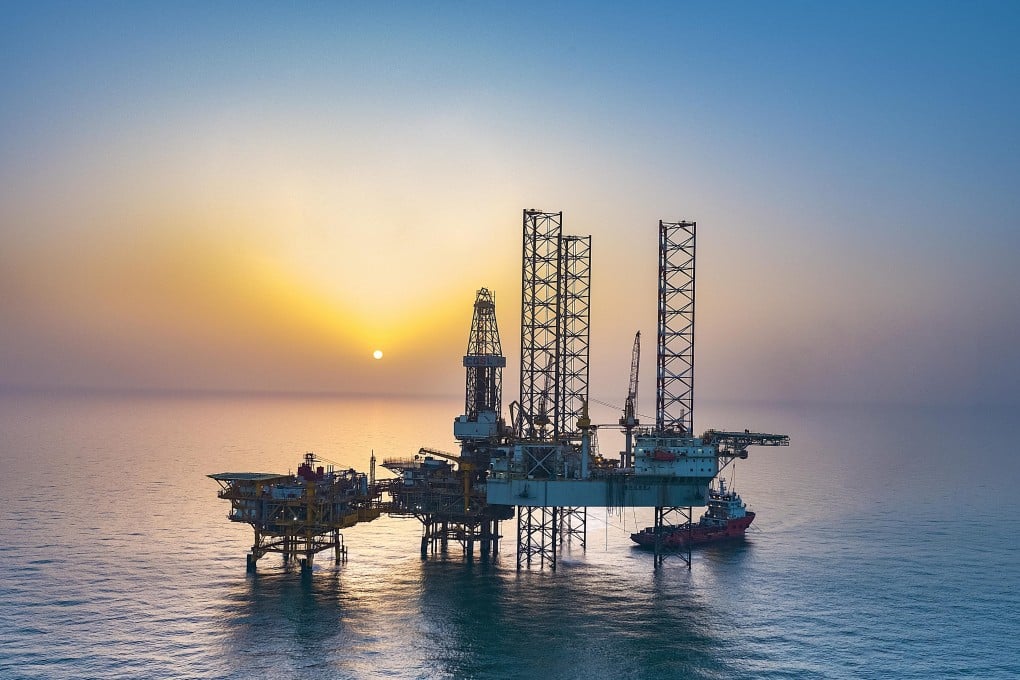Advertisement
Climate Change: Chinese offshore oil and gas giant eyes major clean energy output expansion to help nation reach environmental goals
- China National Offshore Oil said it will aim for non-fossil fuel to make up over half its domestic output by 2050
- However, it made no mention of reducing so-called scope 3 emissions from suppliers and customers, which typically make up the bulk of supply-chain emissions
Reading Time:3 minutes
Why you can trust SCMP

State-owned energy giant China National Offshore Oil has set a target for non-fossil fuel to make up over half its domestic output by 2050 to help the nation reach its climate goals.
The Beijing-based integrated energy firm will also aim to reach peak carbon dioxide emissions arising from its own operations by 2028 and to become carbon neutral by 2050, according to its climate action plan unveiled late on Wednesday.
The plan is in line with China’s goal of achieving peak emissions before 2028 and carbon neutrality by 2060.
Advertisement
However, the company made no mention of any ambitions to reduce so-called “scope 3” emissions from its raw materials suppliers, logistics partners, and particularly its customers. Consumption of the products typically makes up the bulk of an oil and gas company’s value-chain emissions.
European energy giants such as BP, Shell and TotalEnergies have 2050 net-zero emissions targets that cover scope 3 emissions, whereas their US rivals, like ExxonMobil and Chevron, do not.
To realise its climate goals, China National Offshore Oil has set itself interim targets. By 2025, it plans to slash its carbon emissions intensity – per unit of output – by 10 to 18 per cent, and will aim for natural gas – a less carbon-intensive fuel than oil – to account for a third of its total fossil fuel output.
Advertisement
Advertisement
Select Voice
Choose your listening speed
Get through articles 2x faster
1.25x
250 WPM
Slow
Average
Fast
1.25x